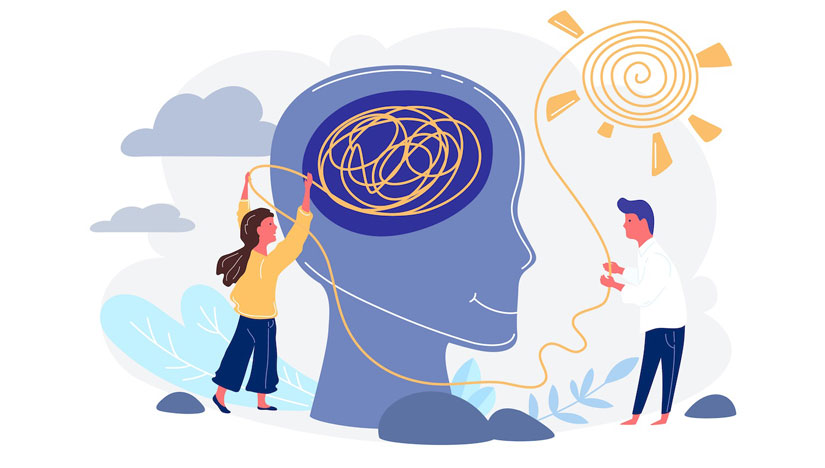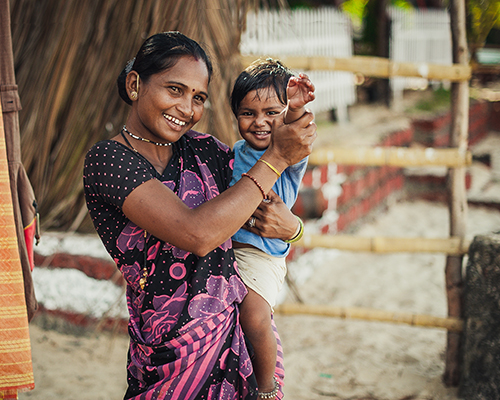Telemedicine and Mental Health Services: A Pathway to progress?

In 2015, nations came together to work toward a common goal: meeting Sustainable Development Goals (SDGs). The SDGs represent a tremendous shift from the Millennium Development Goals, recognizing the need for a more comprehensive approach to health by encompassing non-communicable diseases, mental health, and substance abuse. This was the result and a small win for decades of research and advocacy for mental health to be given its proper position in the global development agenda.
However, with the arrival of the recent COVID-19 pandemic in 2020, mental health concerns rose to prominence globally, with experts calling it a ‘shadow’ pandemic. An exponential increase in the risk of post-traumatic stress disorder (PTSD), anxiety, and other common mental health disorders was caused in the backdrop of the severe lockdown due to:
- loss of employment,
- separation from loved ones,
- loss of freedom,
- insufficient food, and
- a shortage of necessary supplies in the atmosphere of inadequate information and misinformation.
The less-than-optimal human resources for health situations were even more constrained in countries with sub-optimal health systems. Most services were devoted to the pandemic, with mental health concerns and service delivery taking a back step. The pandemic necessitated an urgent need for care that circumvented the need to be present to access care physically. This accelerated the need to incorporate emergency and preventive mental health interventions in the pandemic response, bringing to light the opportunity of telemedicine as a platform for the delivery of care services for mental health issues.
Mental Health in India: Stats and Facts
According to the Indian National Mental Health Survey 2015-2016, common mental health disorders such as anxiety, depression, and substance use disorders contribute heavily to the overall health burden, affecting nearly 10% of the adult population. Another study reports that as of 2017, one in seven Indians had a mental health issue of varying severity.

Historically, India has had various policies and programs at different times in dealing with mental health issues like National Mental Health Programme of 1982 (later renamed the District Mental Health Programme in 1996); the Mental Healthcare Act of 2017 based on a human rights-centric approach to mental health issues; and most recently the Ayushman Bharat (Healthy India) initiative launched in 2018 that intends to provide comprehensive primary health care and health insurance coverage for non-communicable diseases, including mental disorders, to lower the negative impact of mental disorders on the population.
Current Status of Mental Health Care Delivery
Despite these ongoing endeavors to enhance mental health care delivery across the country, existing evidence reveals a vast treatment gap ranging from 70%-83% for disorders such as Bipolar Affective Disorder to Neurosis. Multiple factors like lack of awareness and affordability have been seen to influence the wide treatment gaps. Additionally, the shortage of trained mental health service professionals in India, ranging from 0.1 to 1.8 mental health service providers per one lakh population as compared to 9 per 100,000 population globally, contributes to the poor provision of mental health services.
Can telemedicine be a viable solution?
The emergence of computer-aided technology and the growth in the internet’s popularity has increased opportunities for real-time, long-distance consultations and self-care for common mental health issues. Mobile smartphones provide widely available telecommunication technology that can be used as a mechanism for support and treatment delivery in low-resource countries.

Mental health services have often utilized “step-care” models that can be incorporated within the primary health care strategy. The advent of self-care apps for mental health can support many individuals’ primary care mental health services for common mental health issues. A mobile application can bolster primary mental health care efforts by incorporating a self-administered screening tool that can indicate the severity of the mental illness and recommend self-care, care from a mental health professional, and specialized psychiatric treatment. Versions of the step-care model have been shown to be cost-effective in low-middle-income settings. In addition, the tele-mental health services provided by trained mental health practitioners have been shown to be feasible and appropriate for supporting patients and healthcare providers during COVID-19. Furthermore, geographical barriers to delivering mental health services are also broken in terms of physical distance and its associated financial burdens.
By strengthening the mental health capacities of practitioners, tele-mental health services have the potential to narrow the gap between high mental health demands in low-resource settings, especially in post-disaster circumstances. As noted by Augusterfer et al., “telemedicine provides flexibility, the convenience of meeting time and place, and perhaps most importantly, bringing consultation access to people and places that would otherwise have little to no access to mental health support and intervention.” Telemedicine also has the potential to personalize the care being provided. It can offer a dynamic two-way interaction to a multidisciplinary team.
Strengthening telemedicine for better reach and greater impact in India
While telemedicine may appear to be a feasible solution to the treatment gaps, its success relies largely on infrastructure. India has achieved significant development in telecommunications over the past two decades; however, according to the Telecom Regulatory Authority of India (TRAI), as of September 2019, there were only 687.62 million internet subscribers, with 52.08 subscriptions per 100 people. Combined, the existing “digital divide” makes these services even less accessible to women, hard-to-reach, and marginalized populations.
In addition, a prerequisite for high-quality telemedicine is appropriate supervision and regulated training. Given the possible dangers and catastrophic implications of cross-cultural errors and ethical violations, it is critical to pay special attention to delivering training focused on cultural and ethical competence in teleconsultation/supervision. Furthermore, providers need to have a telehealth patient safety protocol. For example, a safety protocol in a telehealth environment might include knowing the patient’s current location to provide immediate care if necessary.
The pace of technological growth in India provides a potential opportunity to improve mental health services and take them to remote and hard-to-reach areas and populations. The efficacy of the step-care model in Indian settings requires further research. In the meantime, a significant increase in the capacity of service providers identified from the communities or already existing public health cadre and enhanced technology infrastructure can lead to more widespread and higher-quality access to mental health services. However, the success of such a model will ultimately depend on improving digital literacy and reducing the digital divide among marginalized populations, especially women, who face the disproportionate burden of mental health issues and treatment gaps.
References:
https://www.ncbi.nlm.nih.gov/pmc/articles/PMC7695585/
https://pubmed.ncbi.nlm.nih.gov/12660056/
https://link.springer.com/article/10.1057/s41271-021-00287-w
Varsha Rajagopalan – Deputy Manager, Sambodhi
Leave a Reply
You must be logged in to post a comment.

